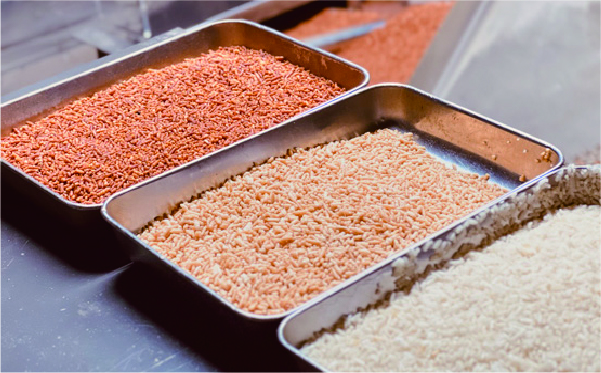

We receive various types of raw rice from domestic and international sources and store them in designated warehouses and cold storage facilities.
We maintain traceable records from the origin to the production process and distribution, ensuring safe and secure sourcing of raw materials.
We accept a wide range of raw materials, including regular rice, glutinous rice, and brown rice, in various shapes, from unsorted to sorted varieties.

We sort unsorted rice to select suitable raw materials for processing.
The sorting process involves visual inspection, grain size, metal foreign matter, specific gravity, milling, metal, and dust removal. Only high-quality rice is stored.

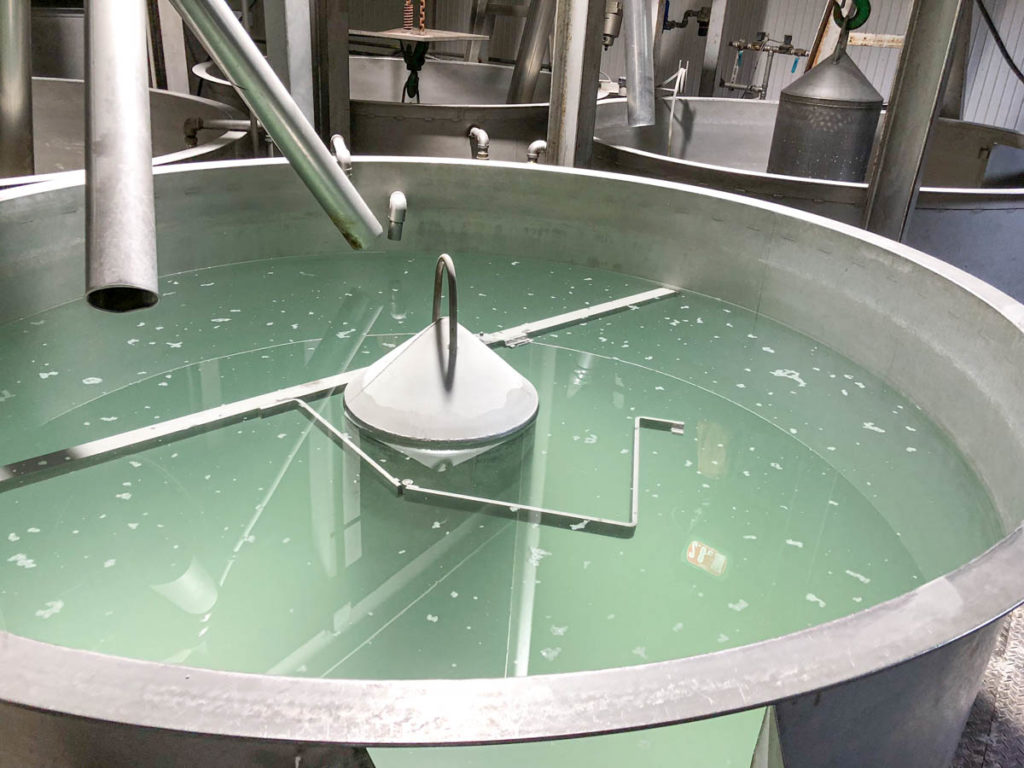
We use local well water in Nara City (with a total hardness of 80 mg CaCO3/L, moderately soft water).
We strictly manage soaking times set for each type of raw material, allowing for controlled water supply.
Due to our ability to germinate rice, we can also produce germinated brown rice, although this may vary depending on the rice’s origin and variety.
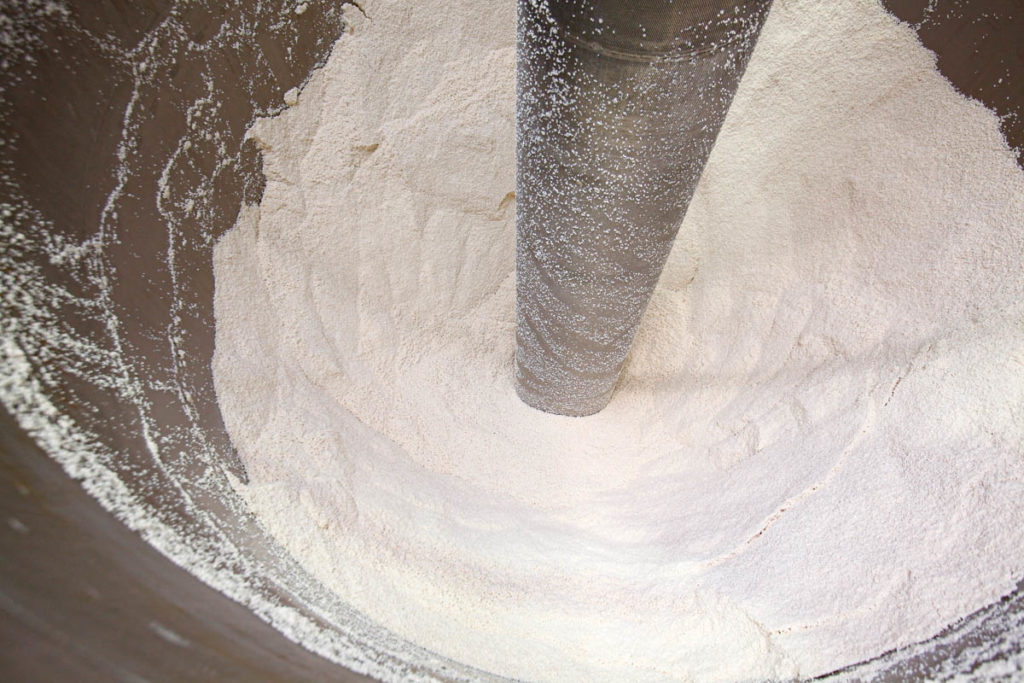
We carefully manage the draining time set for each type of raw material.
Our system allows for draining inside the tank and during transportation, resembling the process of draining through a sieve.

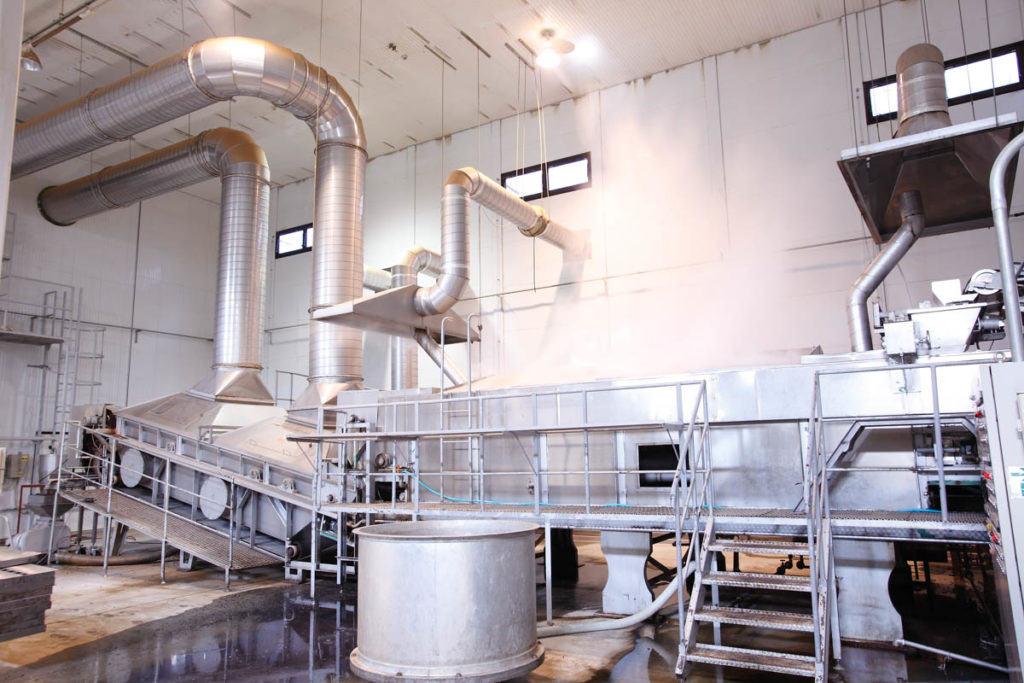
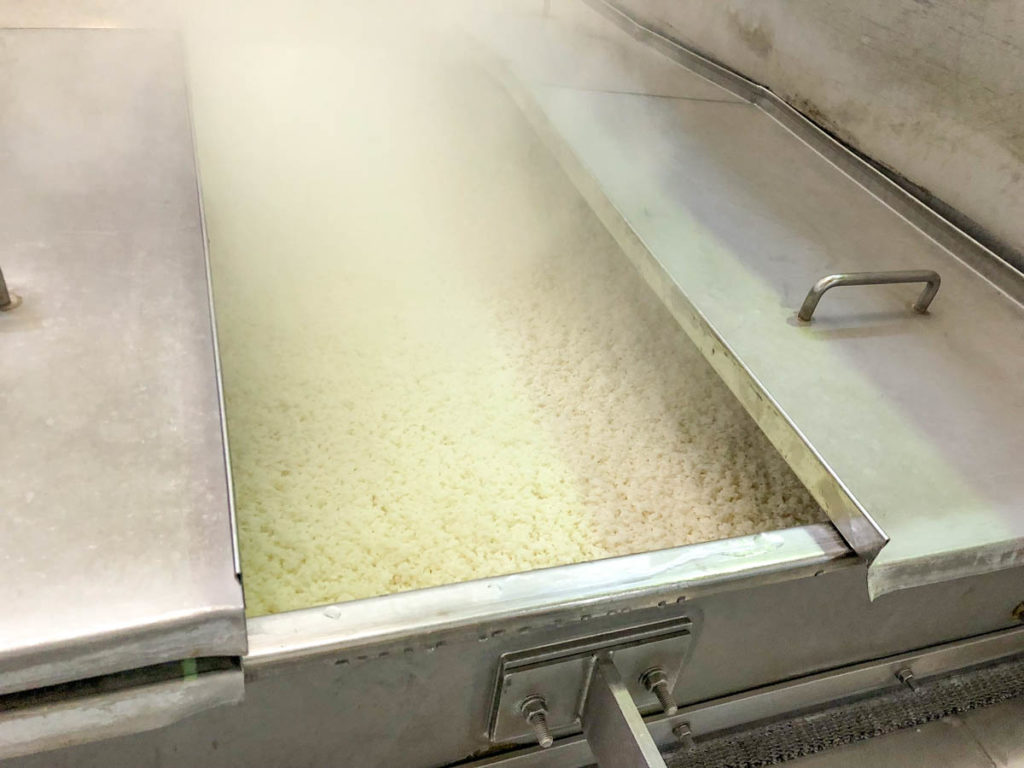
We use a horizontal steaming machine that can evenly steam rice with a first-in, first-out process. It offers easy control of steaming times for various products.
This horizontal steaming machine is a continuous steamer that places raw materials on a conveyor belt and steams them from input to output using evenly supplied steam from below the belt, maintaining a temperature of 100°C for the set time. This results in a continuous and stable discharge of evenly steamed rice to the next stage.
We use saturated steam (steam at 100°C) in the steaming process.
Adding the steaming process before roasting enhances the breakdown of rice starch and increases the sweetness of the rice.
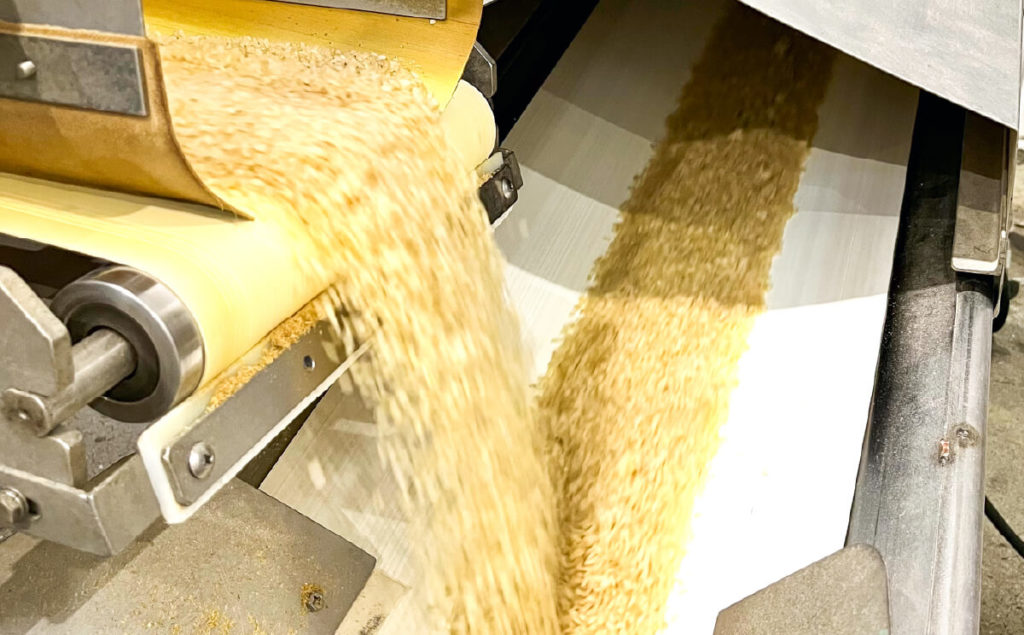
“We achieve instant separation of individual rice grains using rapid drying on the rice surface.
The warm air for drying is reused as a heat source from the next drying machine.

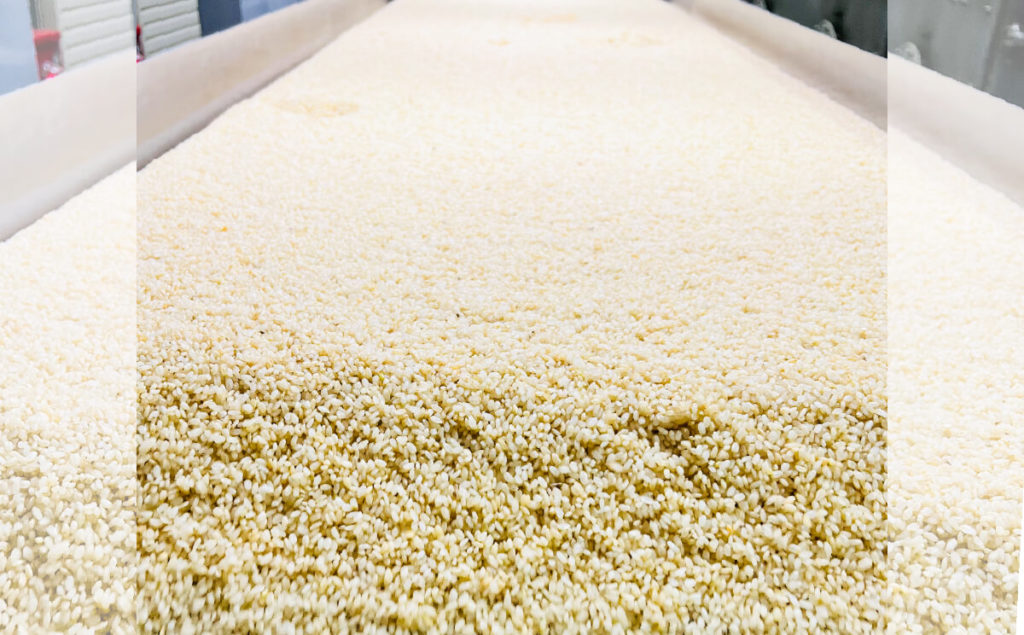
We dry the rice with warm air in a way that does not roast the surface of the grains and then naturally cool them.
The moisture content of the rice is reduced to below 10% during drying.
Rapidly drying (removing moisture) prevents the rice starch from returning to its previous state, making it easier to digest (changing from a β-starch state to an α-starch state).

Steamed and dried rice undergoes sorting based on grain size, color, specific gravity, metal content, and weight before storage.

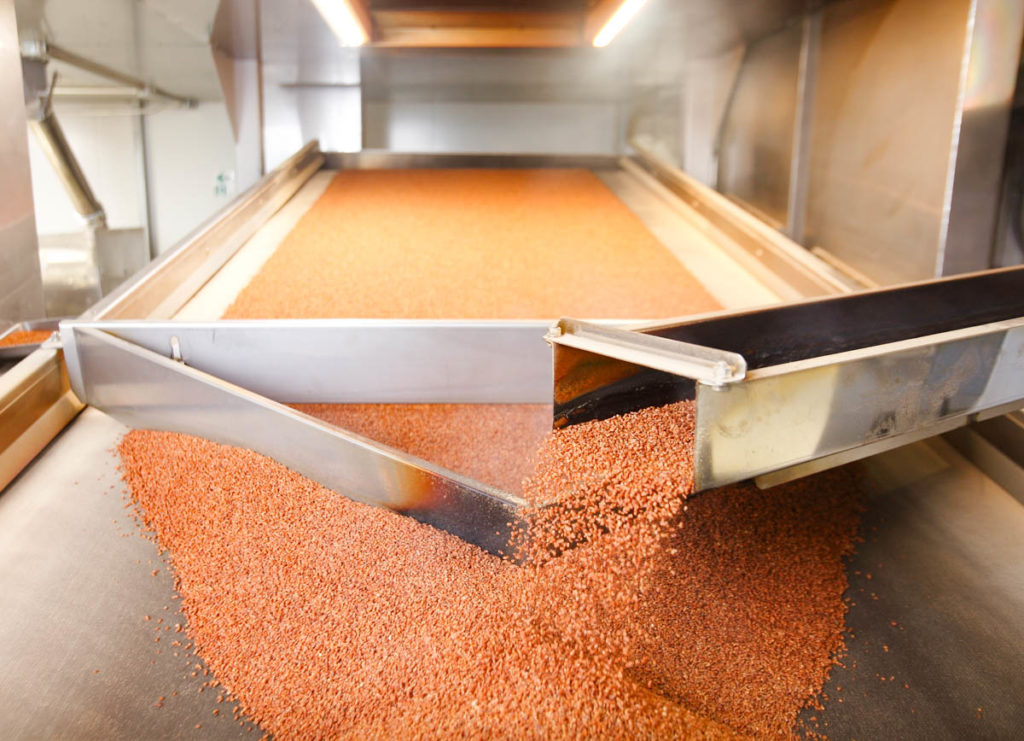
We own multiple roasting machines, including hot air roasting, hot air drum roasting, direct flame drum roasting, sand roasting, and superheated steam roasting machines. Depending on the raw materials and intended use, we select the appropriate roasting machine.
Each roasting machine is customized according to our original specifications and incorporates our technology.
There are three main rice roasting methods: sand roasting, hot air roasting using heat from gas burners, and direct flame roasting. We mainly employ hot air roasting due to its high control over heat, allowing for a wide range of roasting intensities, from deep to light, and enabling large-scale production. We rigorously monitor and control the brightness setting, which is digitized, ensuring low risk of foreign matter contamination. This allows us to create custom products for our customers.
After roasting, we use a Air-cooled cooling machine to maintain the rice at a temperature of 5°C above room temperature.
Precise selection of rice for roasting depends on factors such as whether it should have a strong aroma for tea blending or a sweeter flavor. Generally, stronger roasting results in a crisp, savory taste, while milder roasting retains a subtle sweetness. The composition of starch, including the amylose and amylopectin content, also varies depending on rice variety and grade. This influences the blending ratio, allowing us to create the best product for our customers.


We offer three types of product packaging: bulk bags, craft bags, and small bags. Each packaging type has its own filling line. The process includes color grading, grain size grading, metal detection, and weighing before stacking.
We only ship products that have passed various inspections.
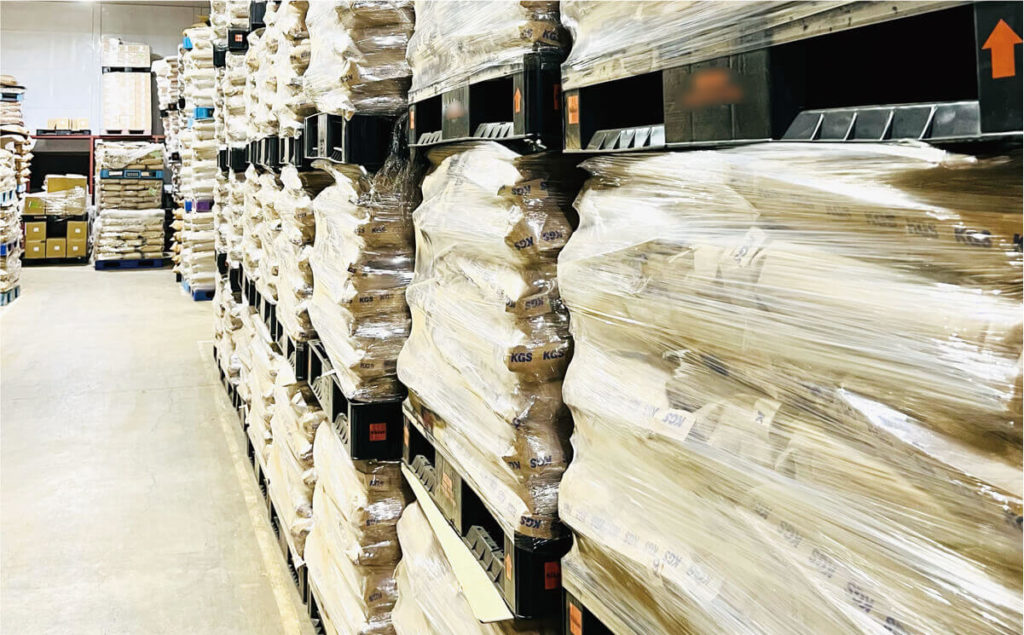
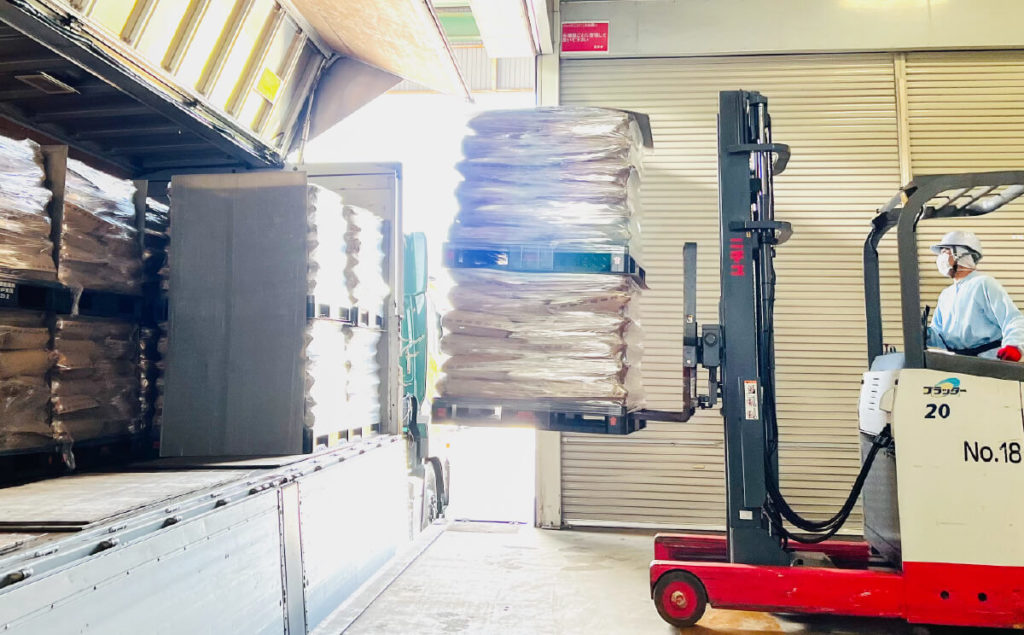
After storage in designated warehouses, we ship our products to domestic and international destinations through specified logistics providers.
As an import and export business, we have partner companies in China, allowing us to establish a network in China and Southeast Asia. This network not only supports the import of Chinese teas (such as oolong and jasmine teas) but also facilitates the supply of raw materials overseas. We have also expanded our network from Asia to the Americas and Europe.

